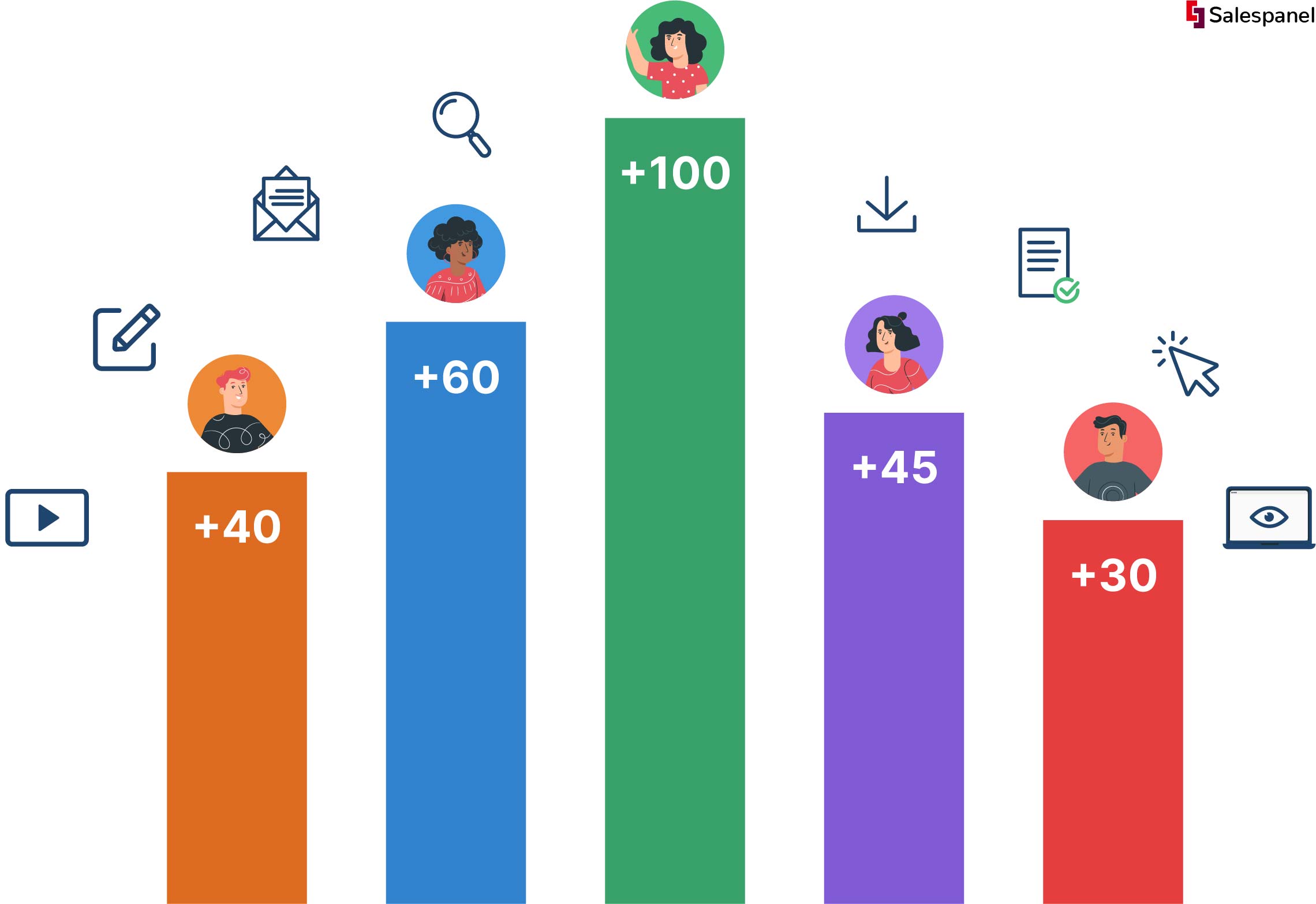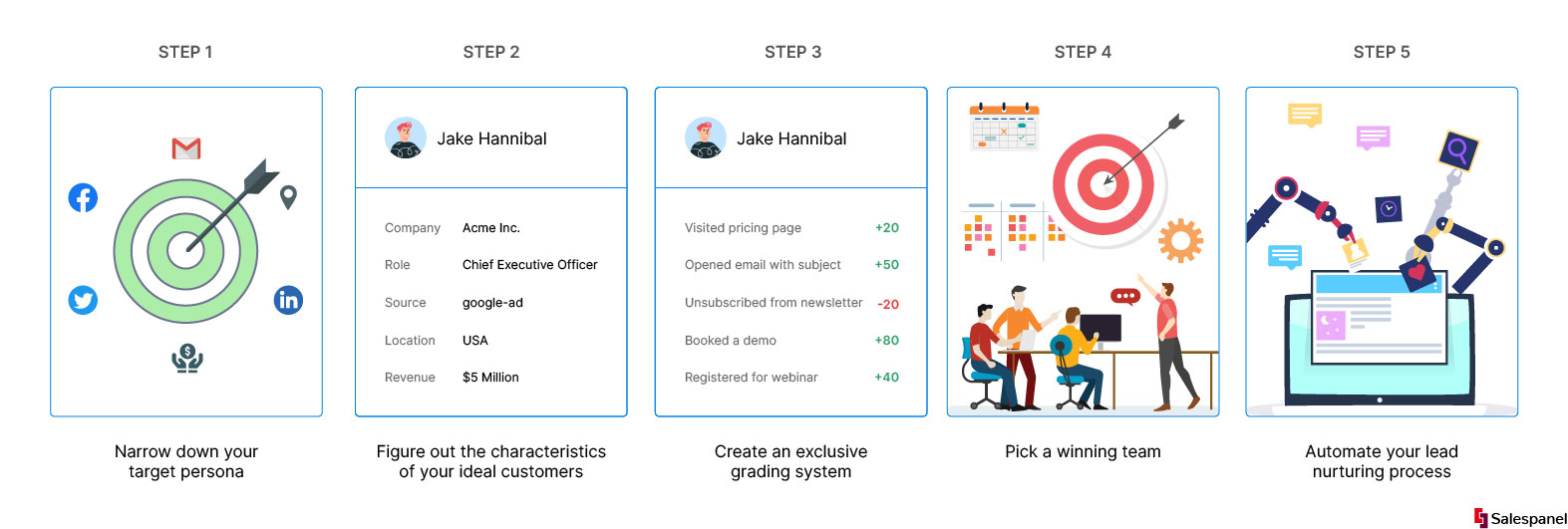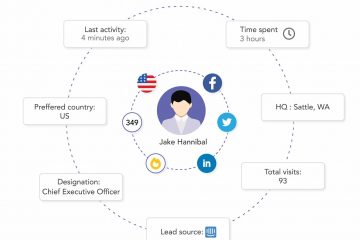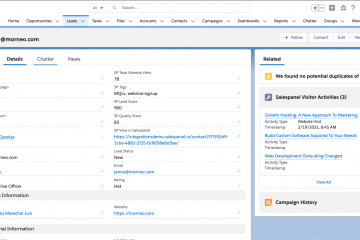How to Create the Perfect Lead Scoring Matrix for Your Business
Did you know that according to a Hubspot survey, generating quality traffic and leads is the biggest challenge for 61% of marketers?
Creating a lead scoring matrix is the answer.
The concept revolves around the idea that if you’re able to accurately identify the stages of a lead’s lifecycle, you’ll be able to connect with leads at the point they are most likely to convert.
In this article, we’ll help you understand what is lead scoring so you can engage with customers at the perfect time.
Continue reading to learn more about creating a lead scoring matrix, why it is essential for businesses, and how to set up a scoring module.
What is Lead Scoring?
Lead scoring is a methodology used to rank prospects based on the perceived value the organization will derive from engaging each lead. The resulting score is used to determine which leads sales and marketing teams will engage, in order of priority.
Think of it this way: Lead scoring allows you to segment your leads by their level of commitment. This enables you to group leads into specific categories based on their likelihood to buy.
With a lead scoring model, you’ll be able to determine which leads have the best chance at converting early on. This will help you concentrate your efforts on responsive leads.
Depending on the industry or clientele, the scoring model is unique, but they all share a similar lead scoring matrix framework.
The framework typically considers the following:
- Professional data provided by the lead.
- Most leading CRM systems would automatically fill in the blanks with information scraped from the web about the lead.
- The lead’s behavior on your website, emails, advertisements, and other digital properties.
- Additional qualifying engagement notes.

Why Should You Care About Your Lead Scoring Matrix
Lead scoring is more than just a marketing strategy. It helps you to focus your sales efforts on real customers who are ready to buy.
Because lead scoring identifies which leads are likely to convert, you avoid spending marketing and sales resources on leads that will never convert.
When done right, lead scoring can have the following effects on your business.
Helps you figure out marketing campaigns that work: Lead scoring allows you to identify the campaigns and channels that result in high-quality leads. You can then use that information to take action.
Facilitates better sales and marketing alignment: By having a formal set of rules in place for qualifying leads, you create a system that takes the guesswork out of determining which leads are viable and worth pursuing. Sales will have a clearer view of the lead quality you are passing on to them, and this will strengthen your relationship with marketing too. Learn More
Increases revenue: By providing timely assistance to qualified leads, sales can close business deals faster. Sales can also focus their resources on leads who are likely to buy.
How to Build Your Own Lead Scoring Matrix
A lead scoring matrix will create new revenue streams by streamlining your customer engagement.
While it can seem daunting and complex, you can build it on your own by following the steps below:

Step 1: Narrow down your target persona.
A basic understanding of your customers will help you to produce a variety of content that will engage them and provide value in the long term.
Therefore, the first step is to understand your customer, and how they perceive your brand. Later, you can group your leads into segments.
For example, you can ask the following questions:
- Who are my leads?
- What are they looking for?
- Where are they coming from?
- When do they show the most interest?
- Why are they interested?
Step 2: Figure out the characteristics of your ideal customer
Your ideal customer is the one who scores 4 on a 5-point scale or 80 on a 100-point scale, indicating that they are most likely to make a purchase. There are three primary criteria that most marketers focus on:
- Explicit criteria: Explicit data are information voluntarily provided by leads. This data does not need to be analyzed or interpreted since it is obtained from face value. This may be anything from:
- A registration form or survey
- Company name
- Location
- Revenue
- Lead source
- Job title
- Past purchases
- Purchase authority
- Implicit criteria: Implicit data is information that is not voluntarily provided by leads. Therefore, they can only be derived by analyzing explicit data. Some examples of implicit data include:
- Website visits – Number and type of pages visited, frequency and length of visits
- Phone calls – If you have integrated your automation platform with your CRM system, you can create custom fields to categorize different types of phone calls
- Interactions and downloads – The number of views and downloads on articles, press releases, whitepapers, infographics, videos
- Webinar attendance – Number of webinars registered for, and attended
- Form completions – Number of demos requested and questionnaires filled
- Offline events – Number of physical events attended (for example, trade shows)
- Subscriptions – Number of requests received for newsletters, RSS feeds, other digital notifications
- Negative criteria: Negative data help you classify the leads that are least likely to become dedicated customers by excluding them based on those criteria. These leads can be identified based on parameters like:
- Unsubscriptions from email campaigns
- Little website visits
- High bounce rates
- Low social media interaction
Step 3: Create an exclusive grade system
Once you’ve narrowed down your lead sources, you can start to assign points based on the quality of the leads.
Usually, companies use different grading systems—some use a score based system, where 1 point equals “poor” quality and 5 points equals “outstanding” quality.
Or they might use a 1 to 10 scale—10 being “very likely to convert” and 1 being “not likely at all”). You can use any scale. Many companies use a -100 to100 scale. A negative score happens when a lead performs undesired actions. As you learn more about your audience and what factors contribute to a lead, you’ll probably change the threshold number over time.

Image Source: bigcommerce.com
Here’s another:

Image Source: bigcommerce.com
Additionally, here are a few lead scoring models that you can combine to build a system that is tailored for your specific lead scoring requirements:
Behavioral: They are the most obvious data points like the number of conversions, page visits, downloads, time spent on pages, etc.
Demographic: They include gender, race, age, geographic region, and other basic information provided at the time of conversion.
Segmentation: They are more detailed demographic attributes. For example, a C-suite will be scored higher than an associate or manager.
You can also read a detailed lead scoring setup guide here.
Step 4: Pick a winning team
Hire a dedicated team to oversee the creation, implementation, and iteration of your lead scoring matrix strategy. This group may include representatives from your sales and marketing departments.
You can also hire third-party solutions. For example, if you are on Salespanel, you can identify potential leads from Salespanel’s leading score matrix easily.
Step 5: Effectively automate your nurtured leads
Workflow automation remains the single most efficient way to nurture prospects—and it’s only getting better. Automated processing engines make it easy for marketers to focus on top-quality leads.
As a result, the time required to complete routine tasks is reduced. It also gives access to cutting-edge dashboards with comprehensive reporting and other features.
Marketers can build scores that are more detailed than before. As leads progress through the customer journey, they can be mapped and graded, and every action can be easily monitored.
Here are some more advantages:
- It shortens the sales cycle by successfully managing leads with content that aligns with their preferences.
- It integrates with your CRM tools, enabling salespeople to use what they’re used to while getting access to more information.
Wrapping Up
Developing a lead scoring matrix is a fine art. You need to weigh the criteria you choose to use against your overall marketing strategy. Rather than wasting time on the guessing game, take the matter into your own hands.
If you have access to marketing automation you may build your own in-house algorithm for lead scoring. Otherwise, you can rely on result-yielding platforms like Salespanel.
If you have any other suggestions, we’d love to read those in the comments section below.
Sell more, understand your customers’ journey for free!
Sales and Marketing teams spend millions of dollars to bring visitors to your website. But do you track your customer’s journey? Do you know who buys and why?
Around 8% of your website traffic will sign up on your lead forms. What happens to the other 92% of your traffic? Can you identify your visiting accounts? Can you engage and retarget your qualified visitors even if they are not identified?



